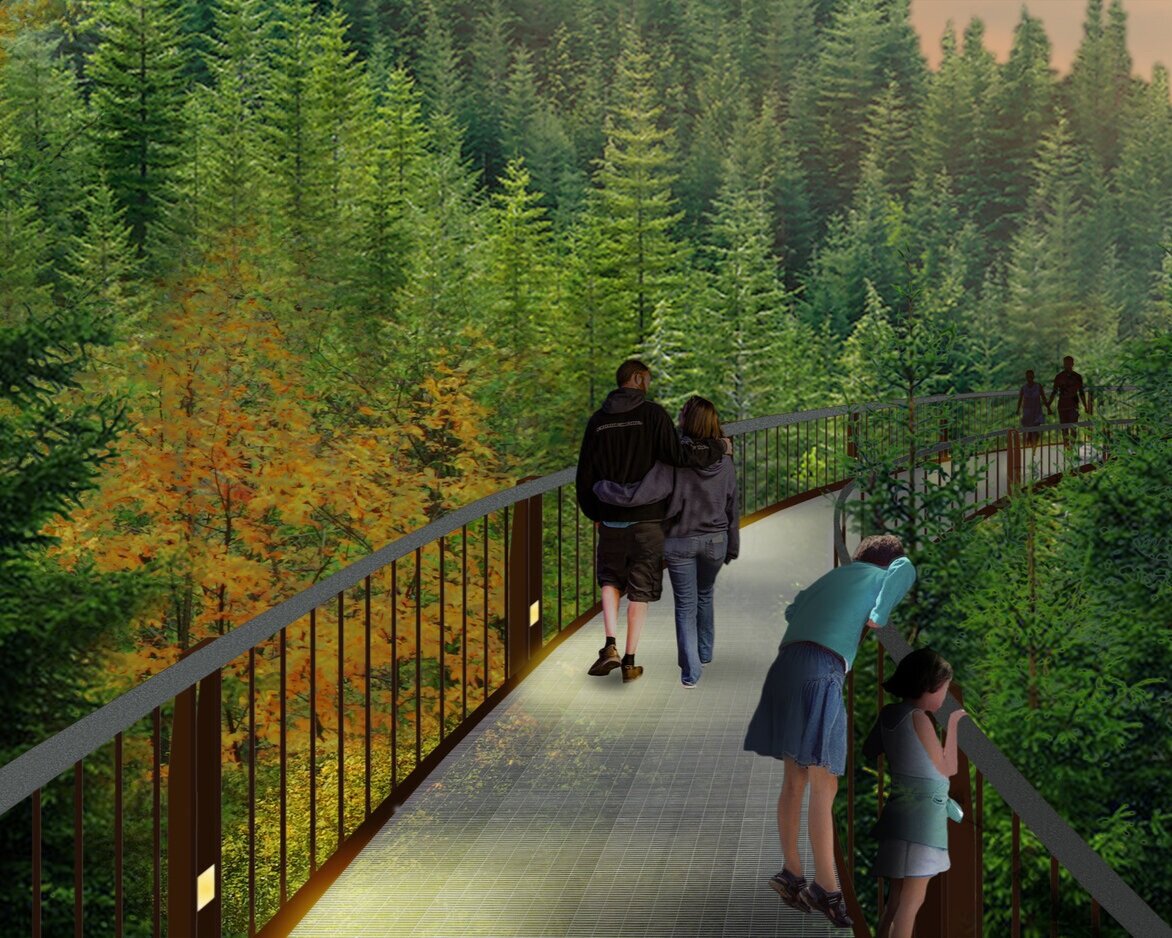The Usefulness of 3D Graphics
Perspective illustrations are an essential component of design communication for representing the spatial qualities and characters of proposed spaces, in addition to diagrams, plans, and section/elevation views.
3D graphics can serve a range of purposes during the design process. In the early stages, perspectives allow designers to explore ideas or compare options. These graphics are usually preliminary models without color or other details. Working in model view forces designers to take things into consideration from all possible perspectives. No forgotten corners allowed!
Here shape and form are explored for a new fire feature at Leach Botanical Garden in Portland, Oregon
At later stages in the design process, when the design is further developed, rendered views are used to help visualize the details and materials along with spatial relationships already established. The graphic continues to be revised and evolves throughout the process until it is ready to be used for client or marketing presentations.
3D graphics assisted our client in visualizing this new pool, which will serve as a water feature and as a swimming pool with spa.
The latest rendering tools open up more possibilities for capturing and communicating a designer’s vision. For example, Lumion streamlines creating photorealistic views with finely detailed vegetation, furniture, materials, as well as different sky, lighting, and weather options. Whether it is a dark rainy day, or a warm sunset in the summer, atmosphere, and mood can be visualized to create the context for landscape stories to take place. 3D graphics also engage clients more creatively in the design and decision-making process.
Considering how a site will feel during different weather conditions is also possible with 3D graphic rendering.






